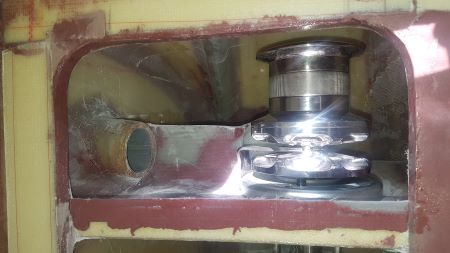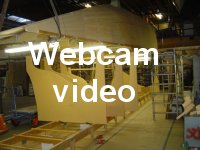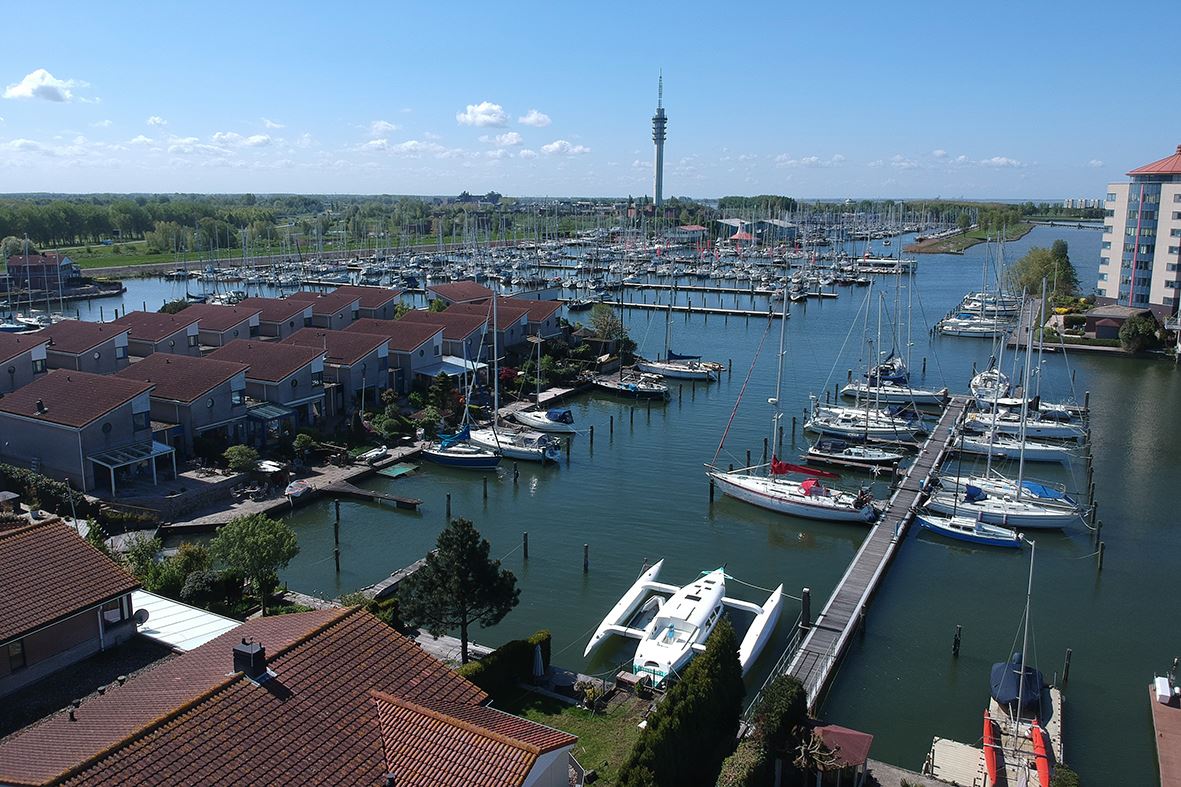Travelers, in the plural, and I don’t mean the travelers among us, but the structures for the mainsheet traveler and self-tacking jib. Both of them gave me a bit of a headache.
During the construction of Fram, I was convinced that I would create a round mainsheet traveler. The radius would be approximately the length of the boom. Therefore, the aft deck is also equipped with high-density foam in the right place and in the right shape.
However, the more I thought about it, the more I began to dislike the idea due to its complicated construction and the additional costs, especially when the benefits were only marginal.
Several multihull sailors use a relatively simple system in the form of a double sheet in the shape of an inverted “V”, also known as an “Oceansheet.” . For a long time, that seemed like a good option, especially because it’s relatively easy to implement. However, I saw on one of the F36 trimarans how the laminate deformed at the location of the blocks. The forces on such a single point are very significant, and the deck needs to be further reinforced in that area. Well, I didn’t really want to deal with that either, and an “Oceansheet” also has its drawbacks.

Long story short, I ultimately chose a traditional mainsheet traveler, and I recently made the base for it. You can read a detailed report about it on my website. The construction is still without the Ronstann series 30 track. I will add these later.
The traveler for the high aspect jib was also a bit of a challenge. From the outset, I wanted, among other things, to have a self-tacking jib. One of the great advantages of a trimaran is that it is more than an excellent sailboat concept, you could say it’s a sailing machine. In order to fully exploit that as a short-handed crew or solo sailor, the systems must work perfectly and be easy to use. Tacking frequently in narrow waters becomes child’s play with it.
Ian Farrier has provided such an option, but he associates it with the need for a centerboard. A daggerboard, in his design, protrudes above the deck and in front of the mast. Right in the place where a self-tacking jib’s traveler track is normally positioned. A centerboard does not extend above the deck and thus does not obstruct the traveler.

For me, the advantages of a centerboard do not outweigh the disadvantages. That’s why I consciously chose a daggerboard. I solved the “problem” of the daggerboard protruding above the deck by placing the jib’s traveler track in front of the daggerboard case. To ensure this doesn’t compromise a smaller jib, I equipped it with a boom, a “jib boom,” in other words. In fact, this makes the trim options for the jib the same as those for the mainsail.
Another option could have been to widen the space just in front of the mast step by making adjustments to the mast step and the head of the daggerboard. I didn’t want to do that, especially since I want to experience the practical benefits of a jib boom.
The downside to the jib boom is that it does make the foredeck a cluttered and unsafe place to be, but I ensure that I don’t need to be there and can trim everything from the cockpit. In addition, I ensure that the boom can be well controlled under all conditions with the jibsheet, topping lift and the traveler control lines.
I carried out the construction parallel to that of the mainsheet traveler, and the structure is the same, although lower and narrower. The Ronstan Series 30 track is 2 meters long. Please click here to jump to the relevant chapter on my website.



 Posted by Fram
Posted by Fram 


















































